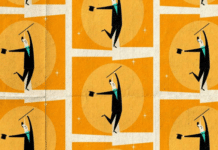A new stage prequel to the popular Netflix series created by the brothers Matt and Ross Duffer in 2016, Stranger Things: The First Shadow is now making its Broadway debut in an open-ended run at the Marquis Theatre following its Olivier Award-winning world premiere on London’s West End. Like the TV show, it combines sci-fi, mystery, and horror with 20th-century small-town nostalgia, a coming-of-age high-school story, and over-the-top special effects reminiscent of a theme-park ride, while adding many touches of juvenile humor to lighten the inherent creepiness.
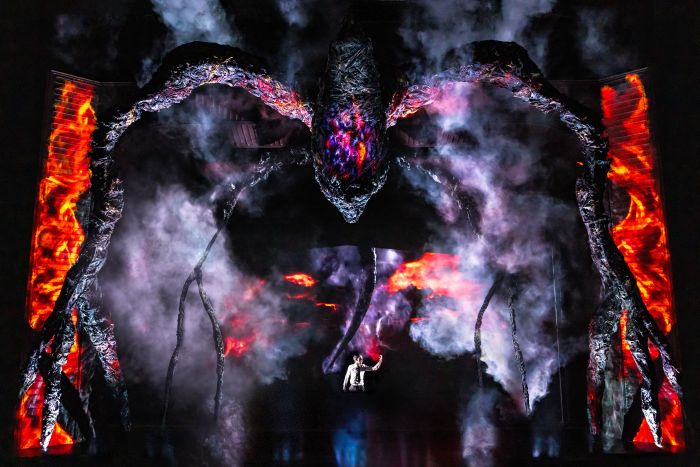
If (like me) you haven’t seen the original (set in the 1980s, in the fictional town of Hawkins, Indiana, where the residents are threatened by the Upside Down – a terrifying alternate dimension with a gateway to Earth opened by a nearby human experimentation facility), the current show, by Kate Trefry (a writer for the television series, along with the Duffers and Jack Thorne), was designed to be experienced by fans and newcomers alike, as a stand-alone origins story and immersive spectacle, filled with futuristic illusions, visual effects, and video projections (by Jamie Harrison, Chris Fisher, and 59), dramatic and electrifying flashes of light (by Jon Clark), enveloping bursts of smoke, haze, and confetti, and loud claps of thunderous stereo-surround sound (by Paul Arditti).
Under the active direction of Stephen Daldry, a large cast of 34 moves around the stage, through the aisles of the theater, levitates (!), and delivers the high-school stereotypes, dysfunctional adults, demonic creatures, and secret operatives (with defining costumes by Brigitte Reiffenstuel and hair, wigs, and make-up by Campbell Young Associates) in the often choppy, redundant, and overstuffed narrative that revolves around the Creel family, just relocated to Hawkins in 1959, to escape the troubled past of their alcoholic ex-military father Victor (played by T.R. Knight) and outsider teenage son Henry (Louis McCartney, who originated the central role in London). It’s not long before he decides to participate in the school play (not Oklahoma! but the much more sinister Dark Side of the Moon, about a witch boy who falls in love with a human girl, presumably to create a play-within-a-play parallel), makes friends with the take-charge director Joyce (Alison Jaye), and shares an attraction with their classmate Patty (another social outcast portrayed by Gabrielle Nevaeh, who doesn’t know, but eventually finds out courtesy of Henry, what became of her absent mother) – a relationship of which their parents disapprove.
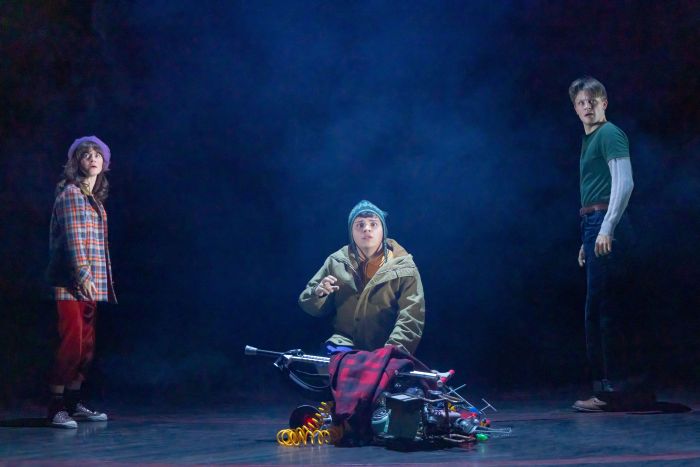
Soon several of the locals’ pets are killed, some of the students take it upon themselves to investigate (Joyce, Patty’s brother Bob, played by Juan Carlos, and Burke Swanson as Jim, son of Ted Koch’s stern Police Chief Hopper) and suspicion falls on both Victor and Henry, the latter prone to fits of threatening and (literally) shocking behavior, marked by staccato movements, screaming, writhing on the floor, psychic visions, and being teleported to a different realm. His mother Virginia (Rosie Benton) seeks help for him from the mysterious Dr. Brenner (Alex Breaux), who isn’t what he at first seems. His revelations explain it all, tie it to the show’s compelling and hair-raising opening scene of a strange and catastrophic experiment with a US battleship in 1943, at the height of WWII, and lay the groundwork for the ‘80s, where the Netflix series begins (and presumably will end in this year’s upcoming fifth and final season, promoted in a sight gag that closes the show).
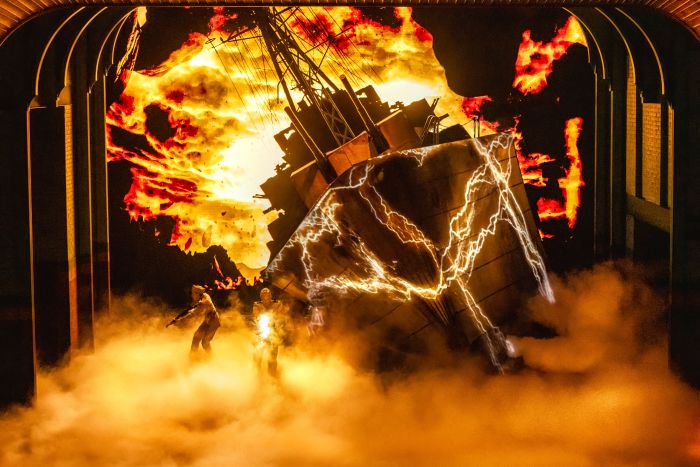
The elaborate set design (by Miriam Buether) transitions from the real-world locales of the school, the different levels of the Creels’ house, and the hospital in which Dr. Brenner meets with Henry, to the liminal spaces beyond – some seen as huge-scale projections, others in full three-dimensions (including a bright recurrent scene of a chorus line in Las Vegas, which seems oddly off tone and theme), and many as a combination of the two, to successful trompe l’oeil effect.
At the performance I attended, it was clear that Stranger Things: The First Shadow, with its teen characters and eye-popping design, appeals to a young audience familiar with the TV series and, because, as one sitting near me explained, it makes them feel like they’re not just watching the story, they’re a part of it. That’s precisely what theater should do, though a tighter and more cohesive script would benefit the up-close-and-personal transporting experience.
Running Time: Approximately two hours and 40 minutes, including an intermission.
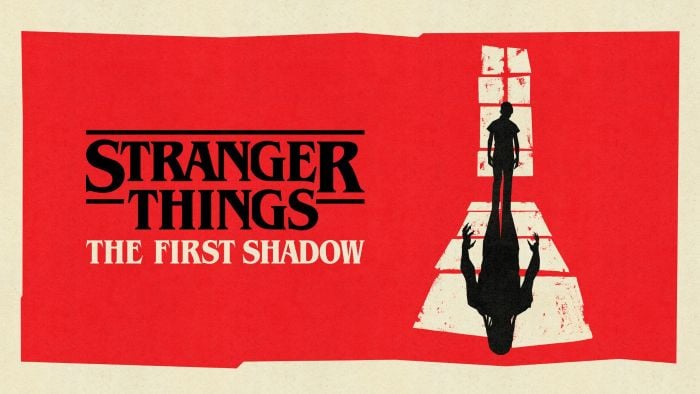
Stranger Things: The First Shadow plays an open-ended run at the Marquis Theatre, 210 West 46th Street, NYC. For tickets (priced at $59.75-299.50, including fees), call (212) 382-0100, go online, or find discount tickets at TodayTix here.

